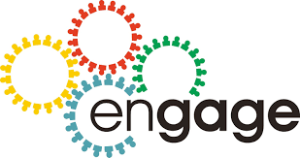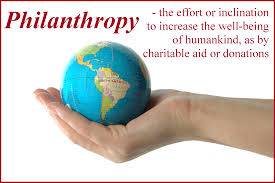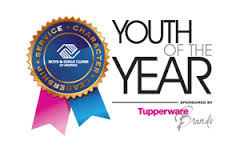I try to keep an eye open for opportunities to learn new things every day. Last week, I learned something about house party events that was so simple, but potentially game changing if you take it to heart. What I learned was . . .
House party events aren’t just a fundraising strategy.
 As a young non-profit professional, who was just learning his craft, I was first introduced to the idea of a “house party” event format as a fundraising technique. The idea was simple. Ask someone to host a small party in their home. Work with them to identify a guest list of potential donors from their list of friends and colleagues. Make a group ask during the get together and collect pledge cards. My former employer used to call these “leadership circle” events.
As a young non-profit professional, who was just learning his craft, I was first introduced to the idea of a “house party” event format as a fundraising technique. The idea was simple. Ask someone to host a small party in their home. Work with them to identify a guest list of potential donors from their list of friends and colleagues. Make a group ask during the get together and collect pledge cards. My former employer used to call these “leadership circle” events.
Personally, I didn’t like the house party strategy for fundraising. Early experiences demonstrated to me that donors were very effective at hiding in group settings. For example, someone who had the willingness to support your organization and the capacity to do so with a substantial gift, usually ended up making a smaller contribution when asked as part of a group in contrast with a one-on-one in-person meeting.
Fast forward to much later in my career, when I was working as an internal consultant for a large national non-profit organization. I was re-introduced to house parties. Instead of using it as a solicitation vehicle, local affiliates where encouraged to use the strategy for new prospect identification and cultivation. At first, this tool was branded “House Party of Hope,” and later it was re-branded “A Party with a Purpose.”
Again, house parties were still being used as a resource development activity. So, I never saw this strategy in any other light. That is until just last week when we hosted a house party in our basement.
The purpose of our house party was to introduce the newly hired CEO for a statewide organization to our circle of friends. The stated purposes of this get together were:
- Introduce the new CEO to his organization’s constituency
- Introduce the organization’s constituency to the new CEO
- Use a facilitated question/answer format with the group to collect stories to help the organization craft a shared vision, set goals, and develop a new strategic plan
 Last week’s experience helped me see house parties in a whole new light. No longer was this strategy simply a tool in a non-profit person’s resource development toolbox. The more I thought about it, the opportunities seemed to be endless. Here are just a few of my thoughts:
Last week’s experience helped me see house parties in a whole new light. No longer was this strategy simply a tool in a non-profit person’s resource development toolbox. The more I thought about it, the opportunities seemed to be endless. Here are just a few of my thoughts:
- Host a house party to validate a final planning document with any number of stakeholder and constituency groups
- Host a house party to engage potential collaborative partners in a discussion about what is possible
- Host a house party to engage staff, build team dynamics, address workplace challenges, start a new program, etc
- Host a house party to collect stories from clients/constituents to gauge your organization’s impact, develop a marketing campaign, identify additional needs, etc
- Host a house party to educate the community and initiate a call to action focused on your organization’s public advocacy agenda (Note: I believe I once read the American Medical Association did this in the 1950s or 1960s to defeat national healthcare legislation moving its way through Congress)
- Host a house party to identify new potential board volunteers as a precursor to the board development committee building prospect lists
I literally believe the sky is the limit with regard to how a house party strategy can be used to advance any non-profit organization’s agency.
If you are interested in learning more about house parties, click-through the following links for a treasure trove of resources and reading materials:
- Boys & Girls Clubs of America: A Party with a Purpose
- Facebook: The Fundraising Houseparty
- Convio: Using House Parties to Engage Constituents
- Ramparts magazine: “Huelga! Tales of the Delano Revolution“
Has your organization ever used a house party strategy? What were your objectives? Were your objectives met? Please use the comment box to share your thoughts and experiences. We can all learn from each other.
Here’s to your health!
Erik Anderson
Founder & President, The Healthy Non-Profit LLC
www.thehealthynonprofit.com
erik@thehealthynonprofit.com
http://twitter.com/#!/eanderson847
http://www.facebook.com/eanderson847
http://www.linkedin.com/in/erikanderson847

 This morning, I was in my car driving down the interstate when National Public Radio (NPR) ran a story about UNICEF’s goal to raise $9 million to fight against the Zika virus. If you want to learn more about this new, you can
This morning, I was in my car driving down the interstate when National Public Radio (NPR) ran a story about UNICEF’s goal to raise $9 million to fight against the Zika virus. If you want to learn more about this new, you can 


 The other day, I was in my home office trying to wrap up some work before dinner. The television in the other room was tuned to PBS and
The other day, I was in my home office trying to wrap up some work before dinner. The television in the other room was tuned to PBS and 
 I first met Noel more than a year ago when I signed a capacity building contract with
I first met Noel more than a year ago when I signed a capacity building contract with  John is the other marketing guy who has been in my life for the last year.
John is the other marketing guy who has been in my life for the last year. A few days ago, I was Skyping with Henry Freeman, the owner of
A few days ago, I was Skyping with Henry Freeman, the owner of  I was on the phone yesterday talking with
I was on the phone yesterday talking with  Our United Way friends totally get an A+ on this one because they’ve been running around for a decade now telling us to LIVE UNITED which encompasses the following ideas:
Our United Way friends totally get an A+ on this one because they’ve been running around for a decade now telling us to LIVE UNITED which encompasses the following ideas: My first Boys & Girls Club national conference was in New York City in 2001 literally months before the terror attacks.
My first Boys & Girls Club national conference was in New York City in 2001 literally months before the terror attacks. Fast forward to one of my first engagements as an external consultant. I was assisting with an organizational assessment and conducting interviews with board members, volunteers, collaborative partners, donors, former donors and various other stakeholders.
Fast forward to one of my first engagements as an external consultant. I was assisting with an organizational assessment and conducting interviews with board members, volunteers, collaborative partners, donors, former donors and various other stakeholders. I often find myself standing in parking lots after meeting “kicking stones” with staff, board members, volunteers, etc.
I often find myself standing in parking lots after meeting “kicking stones” with staff, board members, volunteers, etc.
 At my previous agency, their national office made tremendous investments in webinars (aka distance learning). The following are just a few of the training titles I saw them offering:
At my previous agency, their national office made tremendous investments in webinars (aka distance learning). The following are just a few of the training titles I saw them offering: Many people have discovered Slacker radio, but online radio isn’t just about streaming music while you workout.
Many people have discovered Slacker radio, but online radio isn’t just about streaming music while you workout.
 Good morning everyone! Yesterday was New Years Day and I spent the first day of 2014 in a car trying to make it half way back to the Dallas-Fort Worth metroplex. As many of you know, I am still working on a contract temporarily providing technical assistance and organizational services to 20 organizations in New Mexico and West Texas.
Good morning everyone! Yesterday was New Years Day and I spent the first day of 2014 in a car trying to make it half way back to the Dallas-Fort Worth metroplex. As many of you know, I am still working on a contract temporarily providing technical assistance and organizational services to 20 organizations in New Mexico and West Texas. Let me first address the question of whether or not resolutions are meaningful.
Let me first address the question of whether or not resolutions are meaningful. When I opened my non-profit consulting practice 2.5 years ago —
When I opened my non-profit consulting practice 2.5 years ago —  One of the features on my company’s website offers viewers the opportunity to subscribe to a free monthly eNewsletter.
One of the features on my company’s website offers viewers the opportunity to subscribe to a free monthly eNewsletter.
 WIIFM?—Writing a Blog
WIIFM?—Writing a Blog